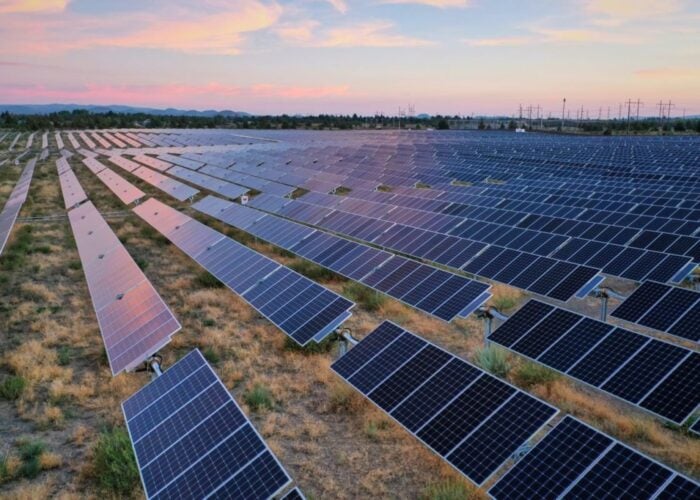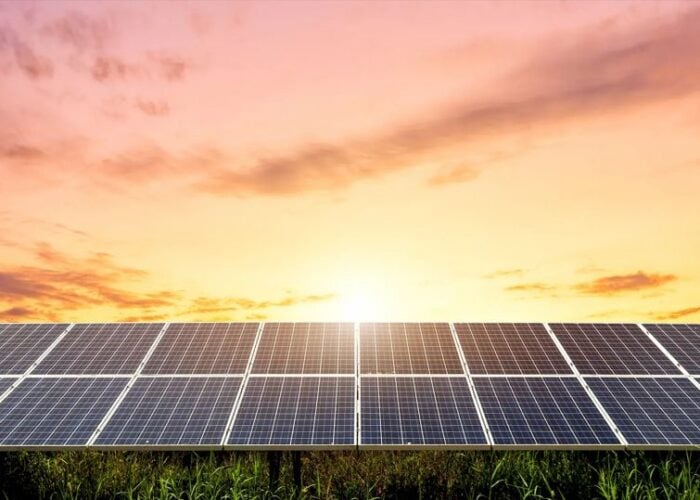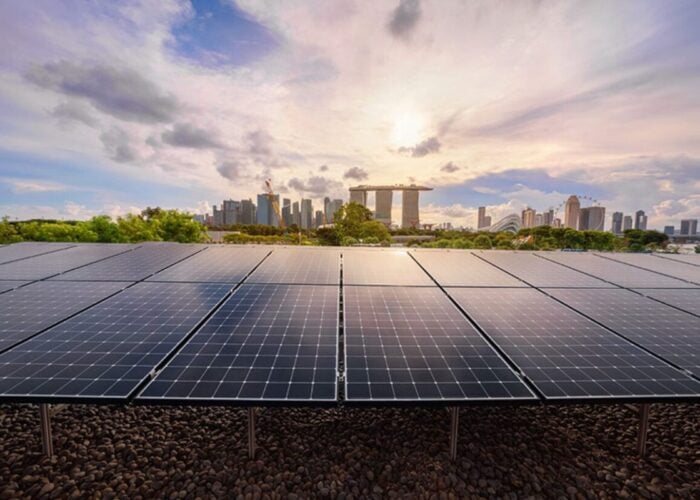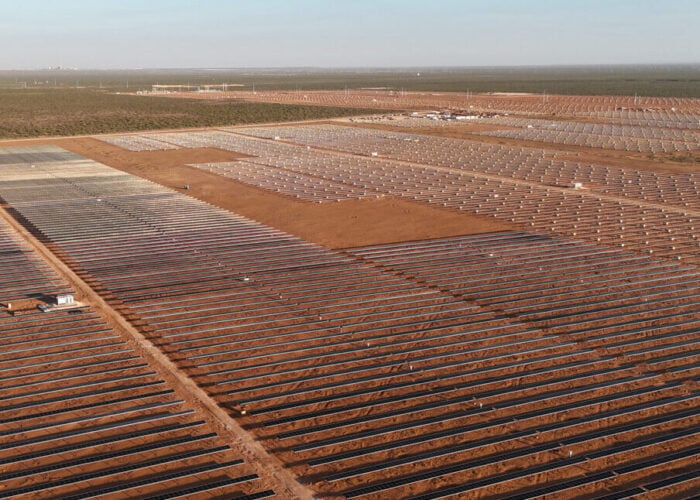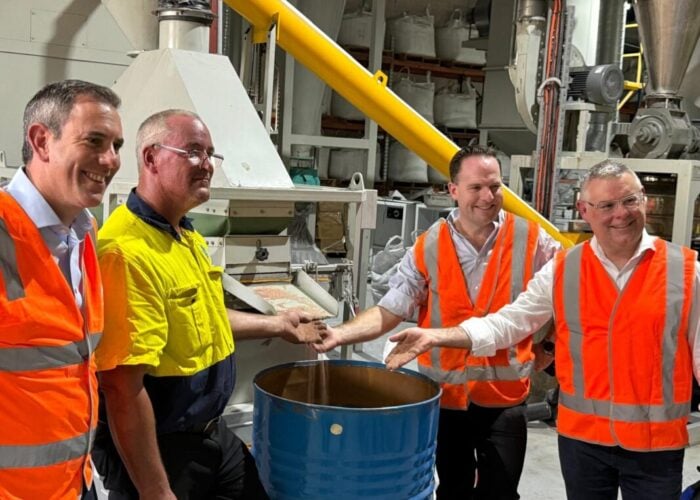California has seen a tale of two IPOs over the past couple of months: one was aborted at the last moment; another was the second largest in US history.
But the similarities begin and end with Silicon Valley's investors. Facebook wants to change the world with its social network of 1bn posters of newborns and Arab spring uprisings, while BrightSource wants to turn sunshine into clean electricity.
Try Premium for just $1
- Full premium access for the first month at only $1
- Converts to an annual rate after 30 days unless cancelled
- Cancel anytime during the trial period
Premium Benefits
- Expert industry analysis and interviews
- Digital access to PV Tech Power journal
- Exclusive event discounts
Or get the full Premium subscription right away
Or continue reading this article for free
Some in the solar industry dare to imagine a combination of energy from the sun and the energy around the crowd cloud. Convergence seems to be happening in two ways but both are underpinned by the same simple theory that if two brains are better than one, just imagine what you can achieve with 2,000 brains or even 2m.
Cleanweb uses cloud computing to create IT solutions for energy, while crowd funding turns small donations into serious aggregate investments.
Sunil Paul is a cleantech investor and founding director of Spring Ventures. He has already founded successful tech companies, including anti-spam software Brightmail.
Paul believes that IT has the power to transform the centralized electric grid but that a “whole new ecosystem of finance is needed for distributed power starting with roof-top solar.”
He coined the phrase cleanweb and has funded a series of hackathons to encourage software programmers to train their algorithms on resource management.
“We think about cleanweb in a couple of different categories: ways to accelerate the deployment of cleantech and a way to creating a resource cloud,” he told me recently at Connectivity Week in Santa Clara, California.
“Cleanweb is the idea that IT is the biggest lever that we have to address all sorts of resource constraints like energy, water and land use. It's a very broad brush and expands to not only smart grid, but companies that are using IT to restructure business models so they are far more efficient than usual.
“It's not just about data, it's also about social media. There was no way to organise 100s of investors until social media came along.”
SunRun, Sungevity, SolarCity, Clean Power Finance and Solar Mosaic are just some of the companies leveraging information technology or “big data” to reduce the cost of solar, he said.
Although Paul also co-founded the Clean Economy Network and started The Gigaton Throwdown Awards with Sir Richard Branson's Carbon War Room, he has claimed that cleanweb will beat cleantech in the race to find solutions to the world's most intractable energy issues.
But these solutions will be ever complex as they leverage increasing volumes of data, even if the end user sees only the simplicity of the technology in their iPhones.
“Since the invention of flint tools, technology has been simplifying complexity – that is the nature of technology,” he said. “It's the nature of our society to get more and more complicated and create the appropriate structures. We plug toasters into the wall and don't think about how the electricity was generated. You can get a flint tool from someone else and not worry about how it was made.
“There are other categories that we don't even understand yet. There will be new categories.”
Geostellar, a solar analytics and mapping start-up, has been simplifying big data for developers and installers by combining information on solar resources, performance, local incentives and sources of financing to establish the viability of a project.
The “big-data geomatics” company is now targeting consumers after it last month won US$14m in strategic funding from NRG Energy, among others. Sungevity, SunEdison and AES Solar were already using its services but the company now plans to launch a web-based Expedia-type model for solar, so homeowners and businesses can accurately model the potential value of their system within a few mouse clicks.
Geostellar's automization reduces costs by up to 40%, said CEO David Levine. “In the past, the solar equation was too complicated,” he said. “We’ve simplified the operations that go into evaluating opportunities for solar energy, calculating the precise metrics that enable property owners to make informed decisions without the hassle.”
SunFunder is to Geostellar, what Microsoft is to Facebook. The pure-play crowd-source platform launches this summer with two small projects in the Philippines and Kenya. Investors will receive a return on their investment, but will not be able to cash the value because of SEC restrictions. Instead, credits will be earned that can then be re-invested.
But in phase two, investors can expect to get cash on their return, said Ryan Levinson, who developed the idea for SunFunder while volunteering for the Border Green Energy team nonprofit on the Burma-Thailand border.
“What we're trying to do at SunFunder through crowd-sourcing is find a way to tap into a new source of capital that historically has been on the sidelines to provide low-cost affordable sustainable financing to the solar companies.
“Wherever you are – in the US or developing countries – access to affordable financing is a challenge in solar. There are a lot of exciting new business models and crowd funding is one of the more exciting ones that has the potential to unlock that new source of capital that was on the sidelines for solar.”
SunFunder aims to make a social impact, but by making a profit for its investors the company hopes to mobilize more capital than it could perhaps as a non-profit, said Levinson.
“The goal is over time to make it a for-profit investment process. But our biggest motivation is solving the problems of energy access and global warming.
“These challenges are so big and the amount of capital that needs to be deployed over the next 10 -20 years is so large that we don't think charity money’s going to solve it.
“A sustainable commercially orientated solution is going to be needed to really get to scale in deploying solar.”
Levinson believes that investments in solar makes sense in the developing world where those who can least afford it pay the highest cost for power – even when they can get it.
In the developed world, solar players aim towards grid parity. But in the developing world solar players compete against kerosene parity – which sometimes can be as much as US$1/kwh.
Levinson cites the Lumina Project at Lawrence Berkeley National Laboratory which claims that “users of kerosene lighting pay 150-times more per unit of useful energy services than do those in electrified homes with compact fluorescent lamps (and 600 times more than for traditional incandescent lamps)”.
“All over the world where people don't have electricity at all or 1.3bn and another 1bn people that have unreliable electricity, solar is a very affordable alternative with no subsidies as long as some time of affordable financing can be provided,” he said.
“That's a really exciting thing to think there is that big a part of the world where solar is already economically viable and it also happens to be where the greatest need for solar is.”
But Levinson is no simple idealist and left the solar project finance team at Wells Fargo to strike out on his own. The rules of the game in risk mitigation for investors have not changed, however.
“At Wells Fargo my job more than anything was not to lose money. I worked for a really risk-averse bank. While it's important to deploy capital quickly and scale that up we wouldn't be doing this if our goal wasn't to achieve scale because it's the only way you can really address these problems.
“But we won't ever be in a position to achieve scale if people lose money on their early investment. Risk mitigation is going to be central to how we develop relationships and structure transactions.”
Although SunFunder is starting small, its ambitions are to scale to megawatt PV systems thanks to the power of crowd-funding.
“It's so difficult to project the potential of crowd-funding 5 to 10 years out because it's so new. It's really big and exciting and fun to be one of the early players.”


